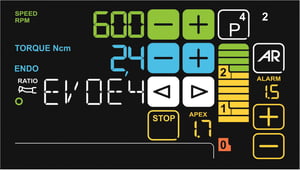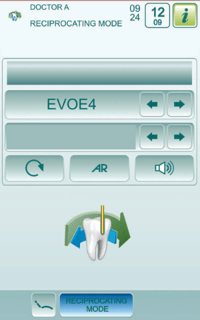For several decades, dentists have based the accuracy of endodontic treatments on sets of intraoral radiographs taken at the beginning of, during and at the end of each treatment.
But was this procedure able to actually achieve the therapy goal?
Radiographic scanning has limitations and can generate problems. In actual practice, a measurement carried out on a two-dimensional image may, at times, give false indications and impact the result of the treatment.
The invention of apex locators was the turning point that revolutionised clinical practice. But where did the initial idea that led to the creation of this device come from?
Apex locator: historical background
At the beginning of last century, Custer discovered that it was possible to measure the length of a root canal using electric current. This turned out to be possible because periapical tissues were found to have higher conductivity than intracanal ones.
This important concept, i.e. the measurement of resistance to the flow of an electric current, is at the basis of many studies underlying the production of early apex locators.
One of the most important breakthroughs came from Suzuki which in 1942 saw that it is actually possible to carry out measurements using two electrodes, one to be introduced in the canal with the other one to be placed in contact with the mucosa.
However, it was only in the 1960s that Sunada created the first apex locator ever built.
Unfortunately, as it used direct current for detection, it required the canal to be completely dry. For these reasons, at the time, these devices were not yet able to provide accurate readings for dental professionals.
In the next few years they evolved into locator models that used alternating current. Measurement accuracy increased, but many limitations still remained. Consequently, there was no widespread diffusion of this device.
Fortunately, research and development did not stop and, today, the apex locator is a reliable tool to support endodontists in their everyday work.
Another important aspect, compared to earlier procedures, is the considerable reduction of the number of radiographs required to support the endodontic treatment. This particular aspect is highly appreciated by patients, who are increasingly sensitive to this issue.
How to choose an apex locator
To date, medical professionals can view, displayed on a colour screen, all the information needed to carry out a top rated clinical procedure.
Often the apex locator, which was born as a stand-alone device, is connected to or integrated into an endodontic micromotor. This allows for continuous detection of the instrument progress along the canal until it can be stopped and, in some cases, of its direction of rotation.
At ergonomic level, using “stand alone” instruments, especially if connected to each other, could actually create some complications. The intersected connection wires between the locator and micromotor, and wires connected to the electrodes necessary for continuous measurement, can be difficult to handle during treatment.
A good alternative, typical of latest-generation dental units, is the possibility of having an apex locator integrated in the dentist's instrument module which connects directly to the coupled “micromotor/endodontic handpiece”.
In this case, the locator information is displayed on the control console of the dental unit and, where present, also on the monitor. This integration makes it possible to monitor the root canal “instrumentation” phase in real time.
Apex locator integrated in the dental unit
Some models of dental unit make it possible to:
- choose from a library of endodontic files;
- set safety values to avoid breaking of files inside the canal;

- choose alternative movement types as suggested by the most modern endodontic techniques.

An integrated apex locator is available for the entire Anthos range, starting from the A5 model.
The A7, L9, R7 and Surgical Cart models can be equipped with a dedicated micromotor equipped with Autostop, Autoreverse, Autoforward functions as well as an endodontic file database.
This type of micromotor interacts directly with the electronic apex locator. Maximised working ergonomics in an "integrated system" to ensure top level endodontics.


